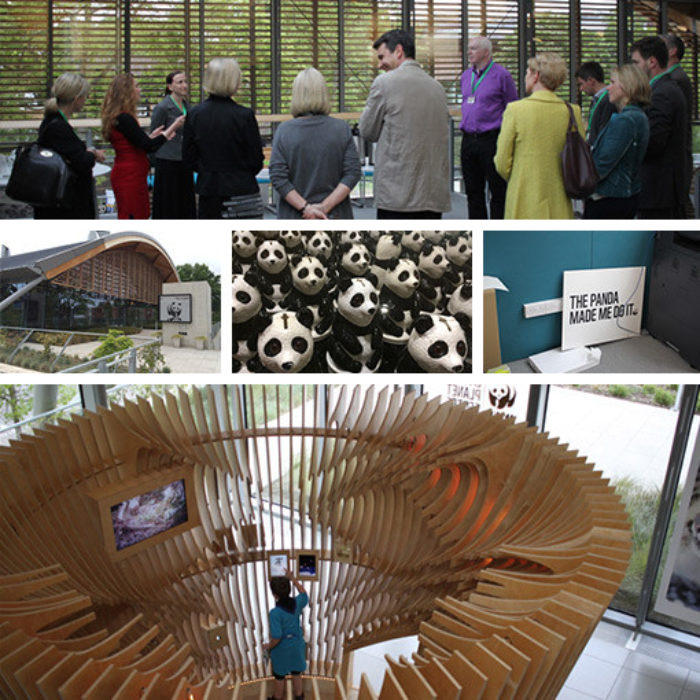Audience Segmentation: Does One Size Fit All?
When it comes to your employee audiences, are you guilty of taking a ‘one size fits all’ approach?
Unless you’ve lived in an underground bunker for the last few years, you can’t help but have heard a lot about using social media for the targeting of messages. Used for political gain, political sabotage, legally, illegally; there’s an ongoing heated debate that no doubt will continue for some time. What’s absolutely indisputable is that the use of insights about an individual’s needs, habits and circumstances for marketing purposes has become not only common place, but sophisticated beyond belief.
Recently I read an article about the potential use of facial recognition in organisations for internal communication/employee engagement/HR purposes. Interesting? Definitely. Potentially worrying? Perhaps. But what hit me most was that while this may be the near future for some organisations, in others there’s a struggle to even differentiate employees based on simple criteria like where they work. In fact, in many cases, employee audience segmentation isn’t even considered.
While marketing segmentation is a well-established technique used to target the right potential buyers for products and services, the idea of employee segmentation is less well used. But there’s a real need for better understanding of audiences when it comes to engaging with employees as stakeholders on a particular topic, and in organisational change situations. Understanding audience needs is a prerequisite to changing behaviour – not doing so is a risk and can be a massive barrier in getting people to act in the way you want them to, or to engage with/buy into any transformation agenda, such as strategy and purpose.
So, what are the considerations and the potential pitfalls to avoid?
-
Think beyond the delivery mechanism
Internal communicators are most likely to consider different audience segments when it comes to channel use and effectiveness. Often communications can be targeted by channel, but the content and message is the same. While channel effectiveness is important, think beyond getting to your audience and consider what you need them to do when you’ve got to them, and whether your message itself is successfully tailored to achieve that.
-
Avoid assumptions
Opinion or guesswork on what a particular audience might think or feel is risky. Use data and insight to get a real understanding (HR departments can sometimes help provide data). If no insight exists, gather it – it doesn’t have to be a complex process, just spending time talking and listening to your audience can be invaluable. Then use what you’ve learnt to tailor communication, tapping into audience needs and motivations to drive action.
-
Avoid stereotypes
Segmentation is based on the idea that there are shared characteristics amongst certain groups, and that they have specific and differing needs, attitudes and levels of knowledge, expertise or understanding. So it can be difficult not to stray into stereotyping particularly when thinking about the common traits of a particular audience. ‘Millennials’, for example, are often seen as a segment, and stereotyped as the ‘me, me, me generation’, who are hard to manage, and who hop jobs with alarming regularity. However they are an incredibly diverse audience. Born between 1980 and 2000, Millennials could be aged anywhere between 18 and 38, and so the term ‘Millennials’ is likely to encompass a diverse audience with very different life and work needs – not all of them will be emoji tweeting hipsters. Make sure you consider this in crafting messages to avoid the kind of misguided mistake Hilary Clinton made a few years back.

-
Go beyond demographics
Factors such as age, gender, length of employment, location, department, grade hierarchy or shift patterns can be really useful ways to segment employee groups. However also consider how to segment based on circumstantial, or behaviourally based factors such as common job roles across departments or engagement levels.
Demographic or attitudinal segmentation might have a more general and regular use, but there could be other more specific ways of dividing up audiences driven by employee life-cycle, or impacts of a change programme.
For example in a potential redundancy scenario there will be those directly affected and keen to leave, those directly affected but wanting to stay, those unsure or yet to find out, those not at risk of redundancy but whose roles will change, those unaffected except in terms of their concern for colleagues. The list will go on. What’s important is to recognise these different groups and consider their attitudes and potential responses to communication.
-
Consider influence and impact
Most organisations recognise the influential role played by line mangers and use this to help communications ‘land’ successfully, however it’s important to equip this audience with additional support or information so they’re not simply a conduit.
There may be other groups who can have significant influence, based on particular behaviours or activities they demonstrate; your champions or ambassadors in a particular field. It can be useful to map your potential influencers on a stakeholder map.
Ultimately, investing in understanding and segmenting your audiences can take time, but when it comes to the success of communication and engagement, it’s time well spent.
Indeed, as any Millennial will tell you, we all want to be understood!



